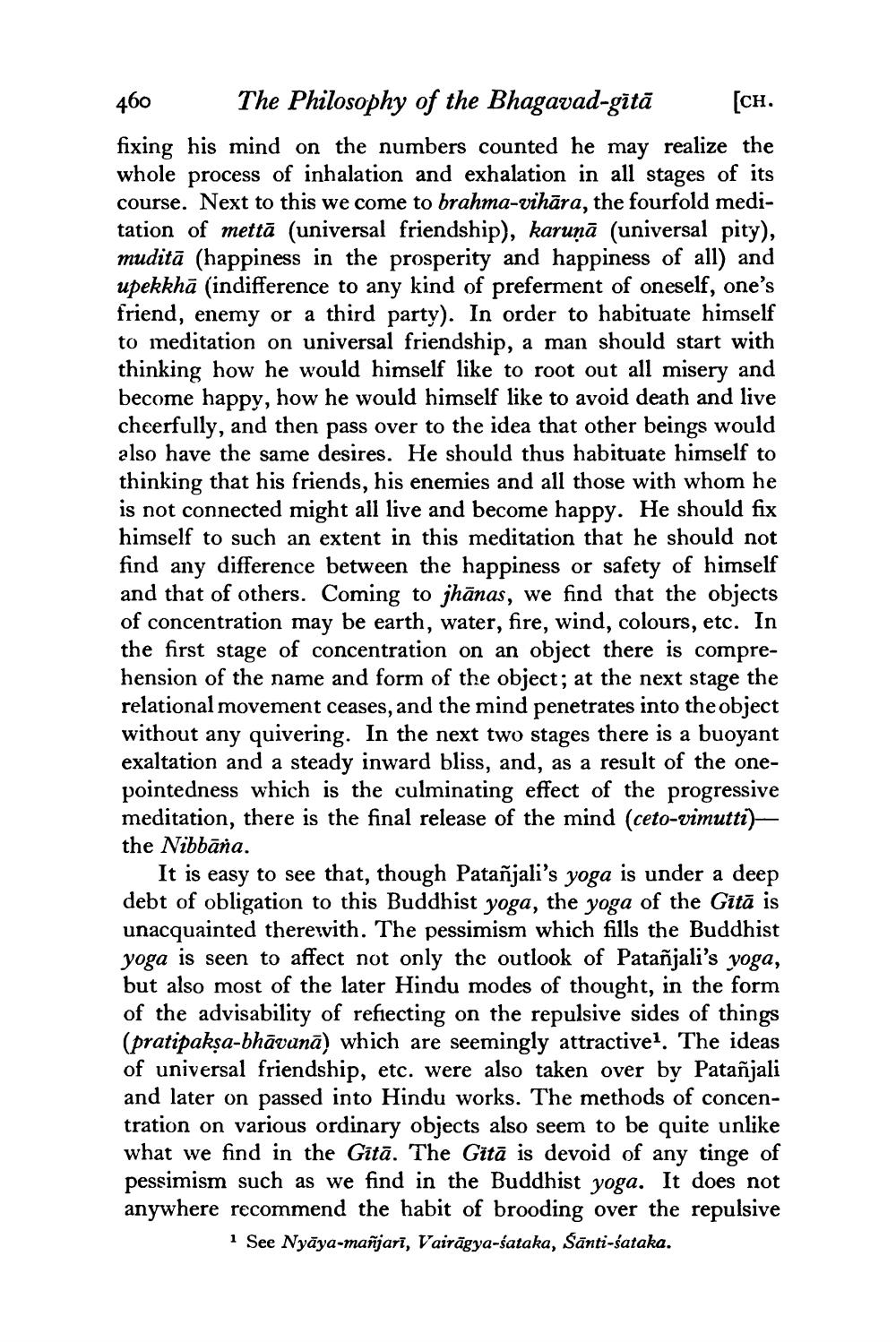________________
460 The Philosophy of the Bhagavad-gītā [ch. fixing his mind on the numbers counted he may realize the whole process of inhalation and exhalation in all stages of its course. Next to this we come to brahma-vihāra, the fourfold meditation of mettā (universal friendship), karuņā (universal pity), muditā (happiness in the prosperity and happiness of all) and upekkhā (indifference to any kind of preferment of oneself, one's friend, enemy or a third party). In order to habituate himself to meditation on universal friendship, a man should start with thinking how he would himself like to root out all misery and become happy, how he would himself like to avoid death and live cheerfully, and then pass over to the idea that other beings would also have the same desires. He should thus habituate himself to thinking that his friends, his enemies and all those with whom he is not connected might all live and become happy. He should fix himself to such an extent in this meditation that he should not find any difference between the happiness or safety of himself and that of others. Coming to jhānas, we find that the objects of concentration may be earth, water, fire, wind, colours, etc. In the first stage of concentration on an object there is comprehension of the name and form of the object; at the next stage the relational movement ceases, and the mind penetrates into the object without any quivering. In the next two stages there is a buoyant exaltation and a steady inward bliss, and, as a result of the onepointedness which is the culminating effect of the progressive meditation, there is the final release of the mind (ceto-vimutti) the Nibbana.
It is easy to see that, though Patañjali's yoga is under a deep debt of obligation to this Buddhist yoga, the yoga of the Gitā is unacquainted therewith. The pessimism which fills the Buddhist yoga is seen to affect not only the outlook of Patañjali's yoga, but also most of the later Hindu modes of thought, in the form of the advisability of refiecting on the repulsive sides of things (pratipaksa-bhāvanā) which are seemingly attractive. The ideas of universal friendship, etc. were also taken over by Patañjali and later on passed into Hindu works. The methods of concentration on various ordinary objects also seem to be quite unlike what we find in the Gītā. The Gitā is devoid of any tinge of pessimism such as we find in the Buddhist yoga. It does not anywhere recommend the habit of brooding over the repulsive
i See Nyāya-mañjarī, Vairāgya-bataka, Santi-sataka.




